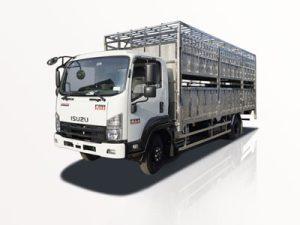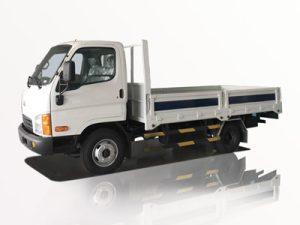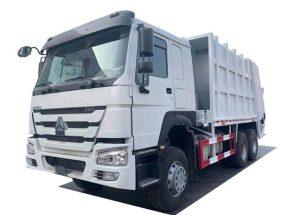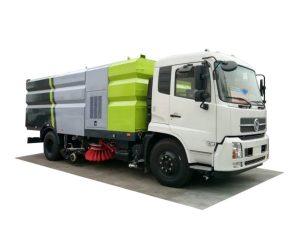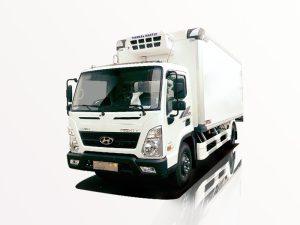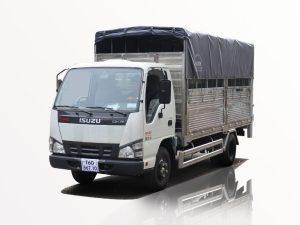Monday to Saturday - 8:00 -17:30
Semi Trailer Light Plug Diagram: A Comprehensive Guide
Understanding the semi trailer light plug diagram is essential for anyone involved in trucking, hauling, or maintaining trailers. This guide will equip you with the knowledge needed to navigate the wiring, troubleshoot issues, and optimize trailer lighting systems. With a clear layout and practical examples, you will gain a complete understanding of semi trailer light connectors and their functions.
1. What is a Semi Trailer Light Plug?
A semi trailer light plug is a crucial component that connects the electrical systems of a semi-truck to its trailer. This connection allows the trailer’s lights to function in tandem with the truck, ensuring that signals, brakes, and running lights operate correctly for safety on the road.
1.1 Purpose of Semi Trailer Light Plugs
The primary purpose of the semi trailer light plug is to transmit electrical signals and power from the tractor to the trailer. These include:
- Tail lights
- Turn signals
- Brake lights
- Marker lights
1.2 Common Types of Plugs
There are several types of light plugs used in the trucking industry, including:
- 7-Pole Round Plug
- 6-Pole Round Plug
- 4-Pole Flat Plug
- 5-Pole Flat Plug
2. Understanding the Semi Trailer Light Plug Diagram
The light plug diagram illustrates how the various wires are connected within the plug and what each wire’s function is. Understanding this diagram is critical for troubleshooting and repairs.
2.1 Components of a Light Plug Diagram
A typical semi trailer light plug diagram includes the following components:
- Pin connection points
- Wire color codes
- Functions of each wire
2.2 Example of a 7-Pole Round Plug Diagram
| Pin Number | Wire Color | Function |
|---|---|---|
| 1 | Brown | Tail Lights |
| 2 | Yellow | Left Turn Signal |
| 3 | Green | Right Turn Signal |
| 4 | White | Ground |
| 5 | Red | Brake Lights |
| 6 | Blue | Auxiliary Power |
| 7 | Black | Backup Lights |
3. Common Wiring Issues and Troubleshooting Tips
Electrical issues can be common with semi trailer light plugs. Here are some common problems and solutions:
3.1 Dim or Non-Functional Lights
- Check for corroded or loose connections.
- Inspect the wiring for any cuts or damage.
- Verify that the vehicle’s power supply is functioning.
3.2 Inconsistent Operation of Lights
- Ensure the wiring is properly connected according to the light plug diagram.
- Look for any broken wires or intermittent connections.
4. Safety Considerations When Working With Semi Trailer Lights
Safety is paramount when dealing with trailer electrical systems. Here are important safety tips to consider:
- Always disconnect power before working on any electrical system.
- Use proper tools and wear safety gear.
- Be aware of the weight and balance of the trailer when connecting or disconnecting plugs.
5. Frequently Asked Questions (FAQs)
5.1 What is the standard pin configuration for a 7-pole trailer plug?
The standard configuration typically includes connections for tail lights, turn signals, brake lights, ground, and auxiliary functions, as detailed in the light plug diagram.
5.2 How do I troubleshoot a non-working trailer light?
Start by checking the plug connections, wiring continuity, and vehicle power supply. Utilize a multimeter to assess the voltage at the plug.
5.3 Can I use a 4-pole plug with a 7-pole trailer?
While you can use a 4-pole plug on a trailer that requires a 7-pole connection, functionality may be limited, especially for additional lights and features.
5.4 What tools are needed for trailer light repairs?
You will typically need a multimeter, wire cutters, connectors, electrical tape, and possibly soldering tools for repairs.
6. Conclusion
This guide covers key aspects of the semi trailer light plug diagram, providing clarity on wire functionalities, troubleshooting processes, and safety precautions. With this knowledge, you can ensure that your trailer lighting system operates efficiently and safely.


